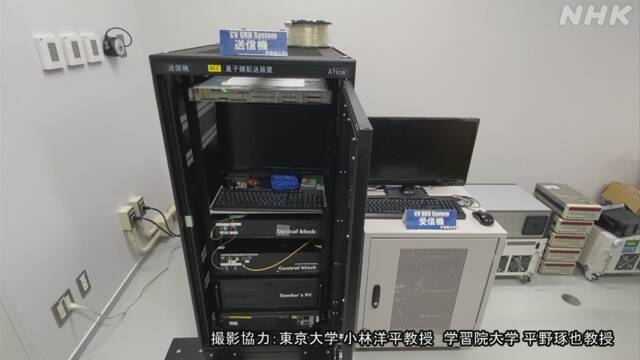
东大:开发了一种新的低成本信号处理方法:“量子密码通信”
-东京大学成功发展-
量子密码通信:
它极大地提高了Internet通信的安全性。
我们为下一代密码通信技术“量子密码通信”开发了“突破性的低成本新信号处理方法”。
当前方法的问题:
当前,主要使用“通过在光子上放置信号进行发送的方法”。
在当前方法中,必须将环境保持在负温度下,以便处理极小的晶粒。
但是,设备在低温下维护很昂贵。
解决方案,设计新的信号处理方法:
东京大学的一个研究小组在“量子密码通信”中设计了一种“使用特殊功能的新信号处理方法”。
在室温下不使用光子
一种利用光纤的光波的方法
能够具有与加密相同的强度
在世界上首次展示。
研究结果:
它发表在1月13日出版的英国科学杂志《自然通讯》上。
IT /网络| NHK新闻
https://www3.nhk.or.jp/news/html/20210113/k10012812731000.html
东大:解决测量光波的量子密码学的安全性问题
-降低量子加密设备的成本-
2021年1月13日
公告摘要
◆常规问题
量子密码术可以检测光子,但是已经研究了“一种测量光波幅度的方法”。
但是,有一堵大墙“保证安全的理论是不完整的”。
◆这次,我们设计了一种新方法
通过检测光子获得的窃听痕迹,
仅根据幅度的模拟测量结果
发明了一种新方法来准确估算窃听的痕迹,
解决了安全问题。
◆成本低廉
与光子检测器相比,该振幅测量装置可以低成本且紧凑地实现。
它与现有的光通信技术(例如波长复用)具有高度的亲和力。
预计将促进量子密码技术的普及。
该研究小组:
解决了测量光波的量子加密方法的安全性问题。
没有做出不切实际的假设
保证安全
具体的沟通方式,
我是第一次发现它。
通过波幅识别窃听痕迹:
从“模拟波幅”中找到窃听的痕迹。
一种新方法的想法是解决方案的关键。
由于这个结果
降低量子密码设备的成本,
量子密码设备的紧凑性
光波长复用通信(注3)等
这将为大容量开辟道路。
为传播具有强大安全性的量子密码技术。它提供了很大的动力。
日本经济新闻
https://www.nikkei.com/article/DGXLRSP602973_S1A110C2000000/
Nature Communications volume 12,
Finite-size security of continuous-variable quantum key distribution with digital signal processing
Nature Communications
Abstract
In comparison to conventional discrete-variable (DV) quantum key distribution (QKD),
continuous-variable (CV) QKD with homodyne/heterodyne measurements
has distinct advantages of lower-cost implementation and affinity to wavelength division multiplexing.
On the other hand, its continuous nature makes it harder
to accommodate to practical signal processing, which is always discretized, leading to lack of complete security proofs so far.
Here we propose
a tight and robust method of estimating fidelity of an optical pulse to a coherent state via heterodyne measurements.
We then construct a binary phase modulated CV-QKD protocol and prove its security in the finite-key-size regime against general coherent attacks, based on proof techniques of DV QKD.
Such a complete security proof is indispensable for exploiting the benefits of CV QKD.